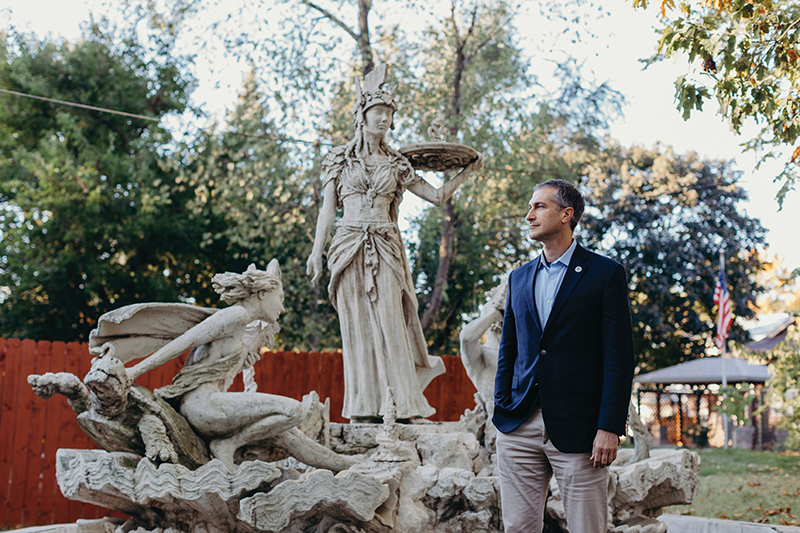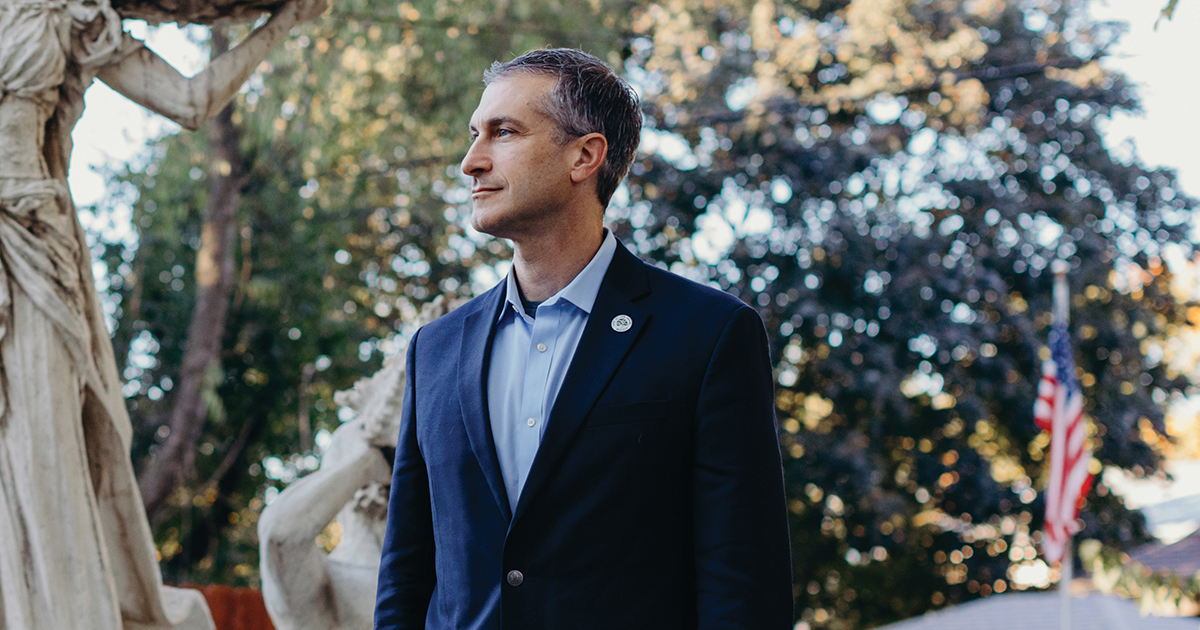Elected to his third term as Ann Arbor mayor in November, Chris Taylor, ’90, MA’94, JD’97, personifies the town-gown relationship, following years of study at the University and his experience in city government. Michigan Alumnus sat down with Taylor at Larcom City Hall to talk about his past and the future of the city.
You traveled a complex path from U-M student to city hall. How did you get here?
I came to the University in 1985 for vocal performance, leaning toward theater more than recital, and decided to get an English degree as well. After completing my undergrad, I entered the doctorate program for American legal history. While on that track, I found the law school to be a much better fit for me than academia, so I became a lawyer. I spent time practicing law—first when my wife and I moved to Boston for five years, then after coming back to Ann Arbor in 2002.
I then had a brunch at a friend’s house in 2008 that changed my political outlook. My friend suggested I run for city council that year. I was always interested in government and excited about government playing an active role in helping people’s lives, but I never viewed myself as a participant. I had all sorts of internal reasons why it would never work; my friend convinced me none were valid. I got the signatures, got on the ballot, and won the contested primary. It was a natural progression to my 2014 mayoral inauguration.
What overarching issues are you aiming to address in this next term?
Local government has a fundamental mission to improve basic services and enhance quality of life. That means we will continue road improvement; make sure safety services are professional, disciplined, and effective; and make sure our water is clean.
In addition, we will continue to take steps to incentivize the construction of more affordable housing. People want to come to Ann Arbor, and we love that, but that creates housing price increases. We’re already a stratified community. In 2015, Ann Arbor and other Washtenaw County communities commissioned the Housing Affordability and Economic Equity Analysis. A key action step assessed that Ann Arbor needs to build around 2,800 units of new, permanent affordable housing over the next 20 years in order to prevent the level of economic and demographic segregation identified in California’s Bay Area. I believe that supporting affordable housing is government’s best tool to meet this challenge.
What extracurricular activities were you involved in at U-M, and how have they influenced your work?
The little time I could spare went into the Inter-Cooperative Council, a collection of student-run housing cooperatives. At that time, it was about 17 houses with 550 members. I was a house president for a year and then elected president of the organization. That time not only helped inform my views of student life and housing needs. It also taught me how to work with people of all kinds and all perspectives, and how to lead an organization that has a focus but divergent views of how to get there.
The theater aspect comes into play, too, in terms of public speaking and comfort on stage. I also occasionally sing at fundraisers, which comes in handy.

What is your favorite Ann Arbor attraction?
One of the great benefits about being mayor is the immersion in the city simply from walking around. I spend a lot of time downtown, but the neighborhoods are wonderful. Knocking on doors on the campaign trail one day, I passed a house with a spare lot next to it. In that lot was a statue, the “Fountain of Minerva” (pictured). It’s such a surprising, beautiful, interesting thing to discover.
Gregory Lucas-Myers, ’10, is assistant editor of Michigan Alumnus.





